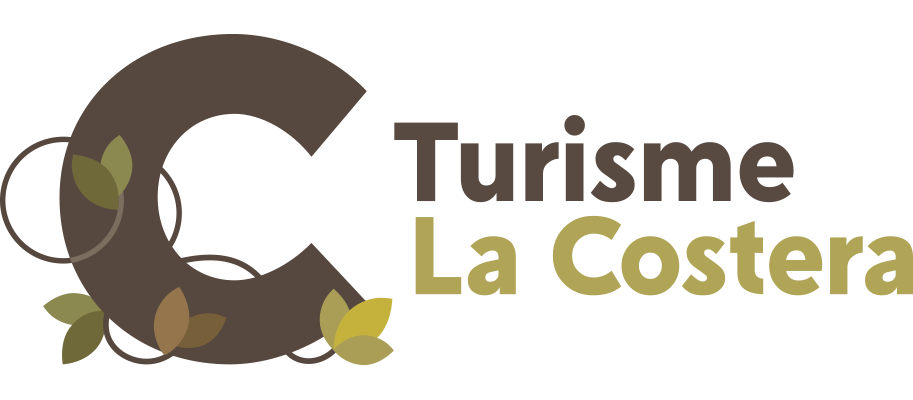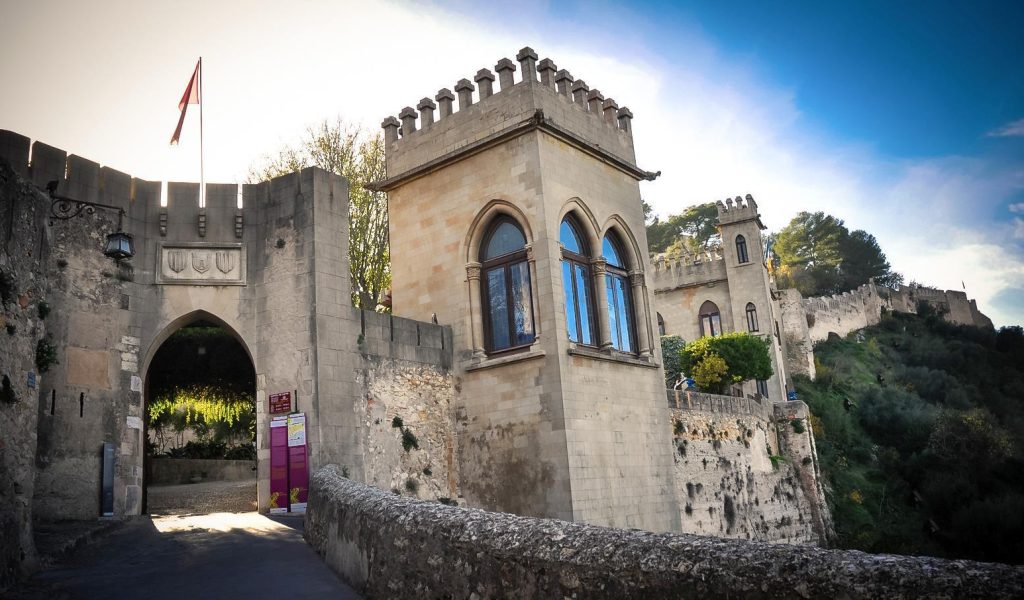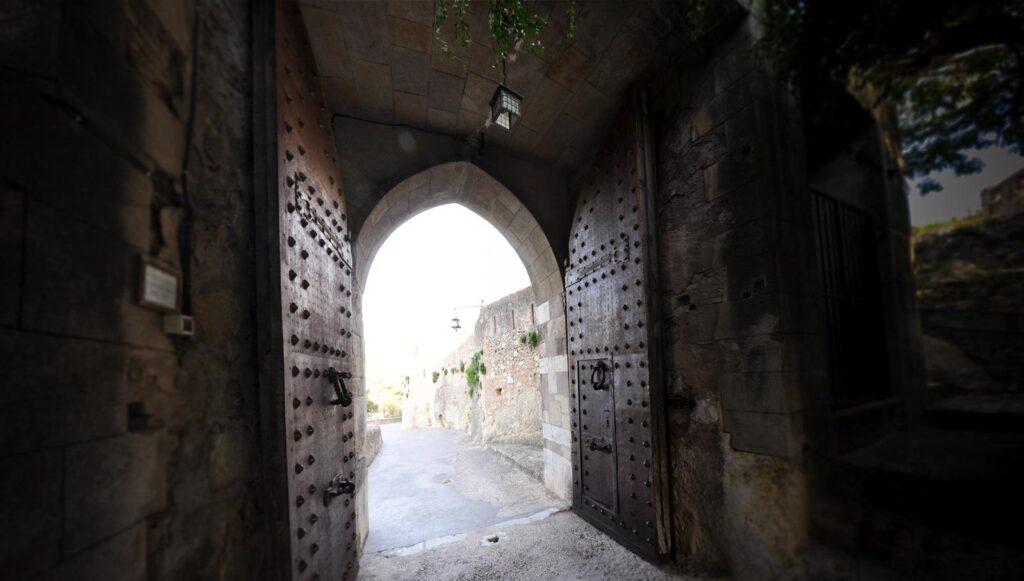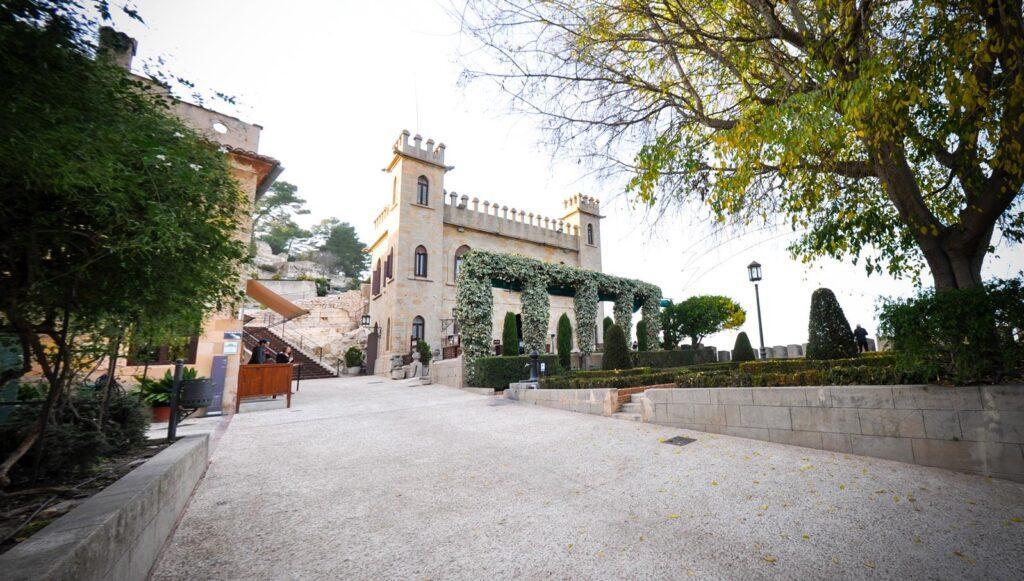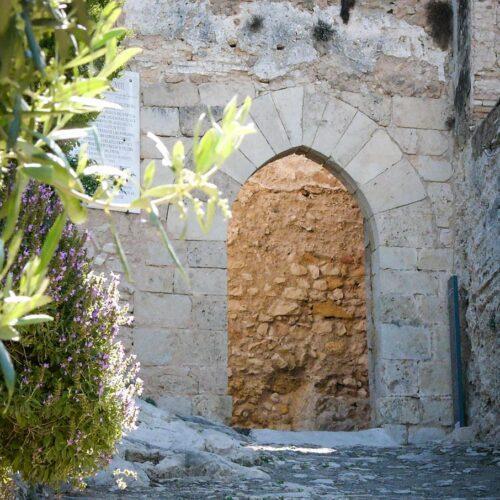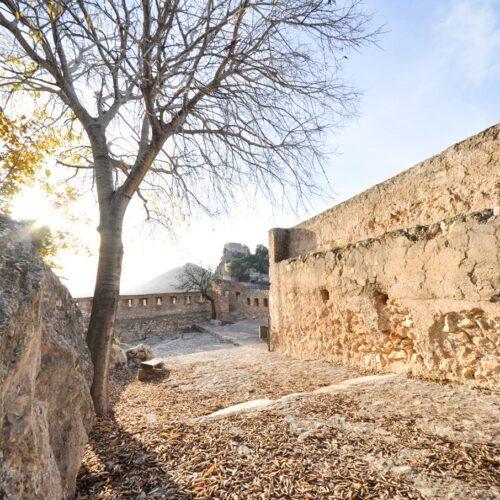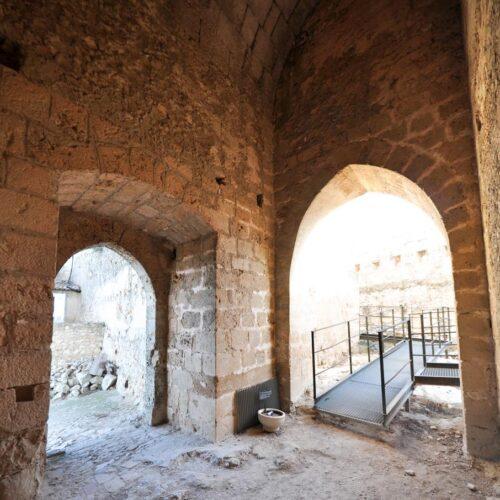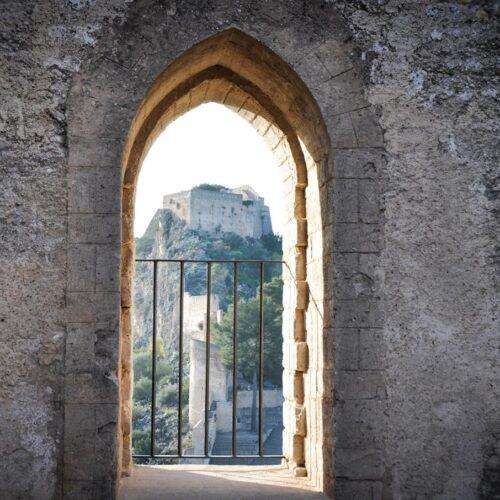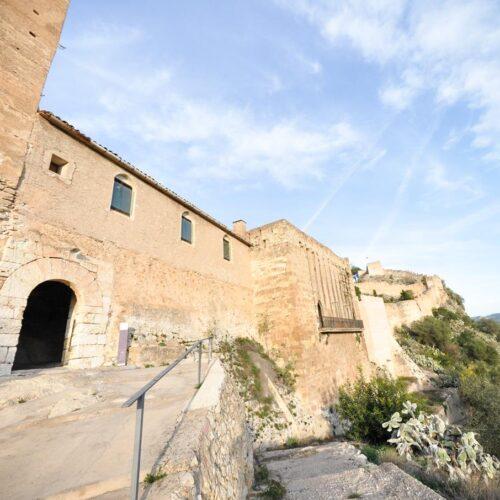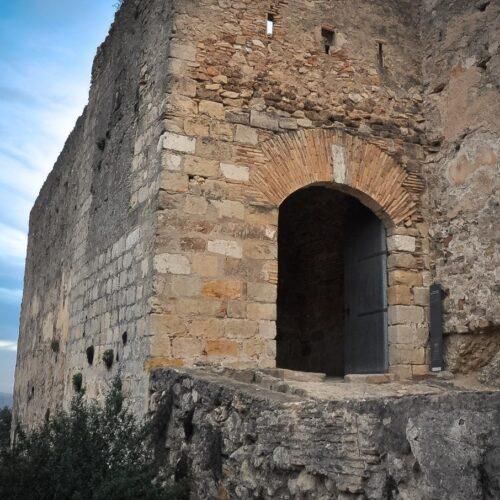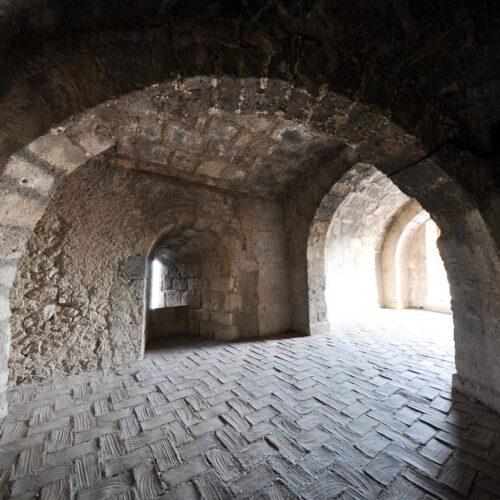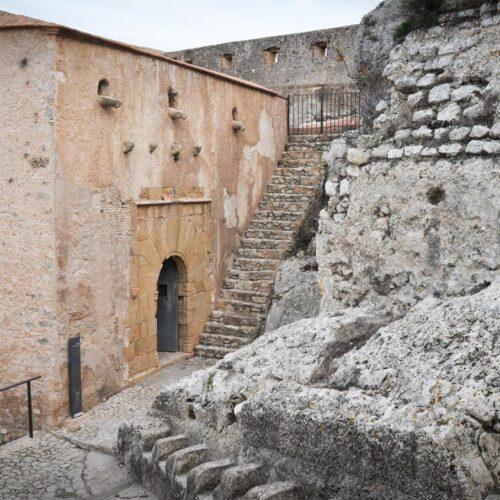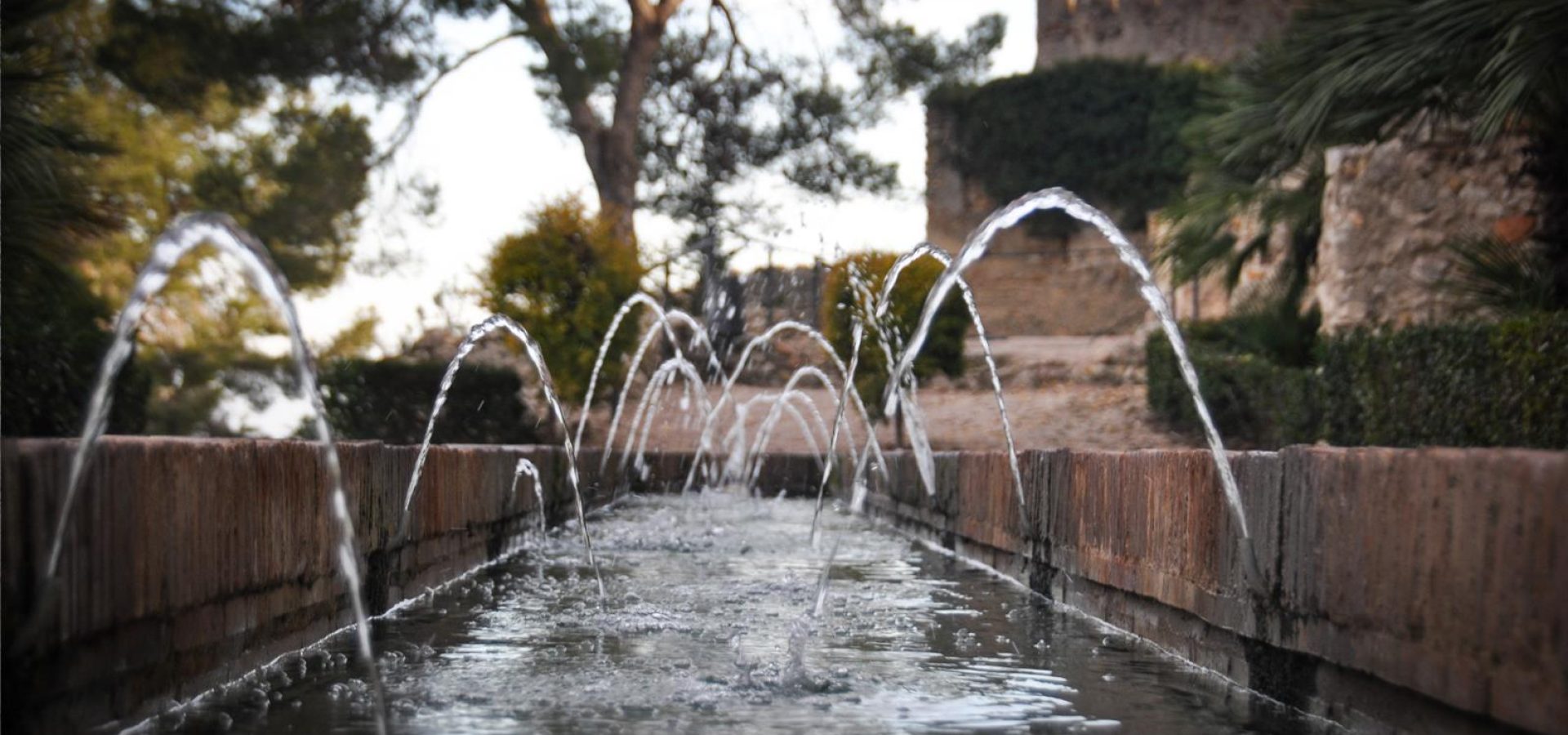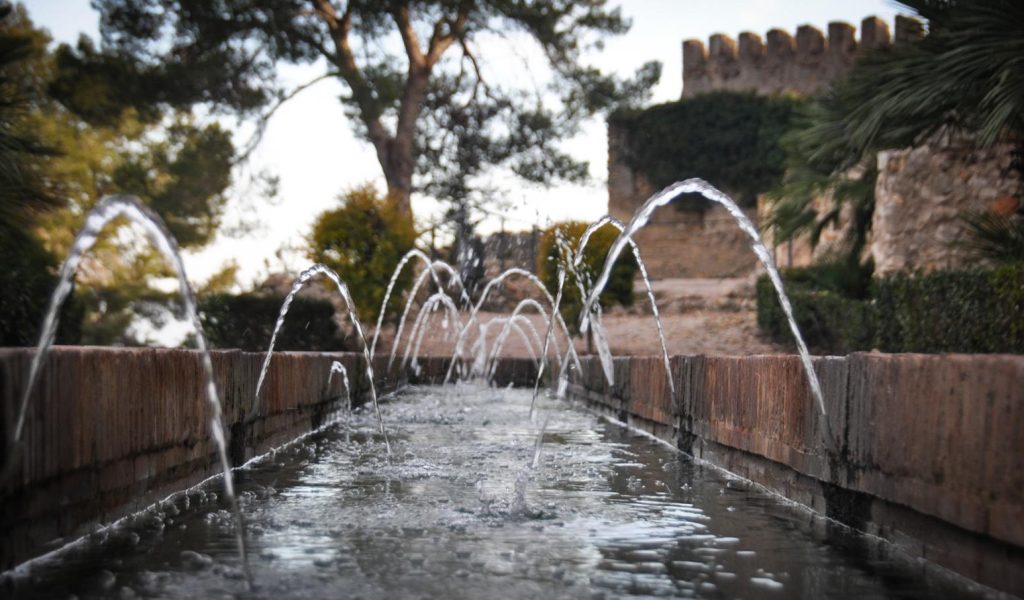The Castle of Xàtiva
Omnipresent at the top of the Vernissa Mountain range, the fortress dominates the entire Costera. Due to its strategic location, it was the scene of several military conflicts throughout its history. It played a leading role during the campaigns of Hannibal and in the period of Al-Andalus, as well as in conflicts during the time of the Kingdom of Valencia: in the wars against Castile, in the Germanías and in the War of Succession.
Its imposing architecture has been declared a World Heritage Site. Despite its Iberian and Roman roots, most of the preserved walls and towers are of Islamic or Gothic origin. Once you are in Xàtiva, it is essential to take a walk around this fortress, where you can see splendid panoramic views of the city and la Costera region.
The enclosure is divided into the Castell Menor (Minor Castle) and the Castell Major (Major Castle), connected by a double line of walls.
